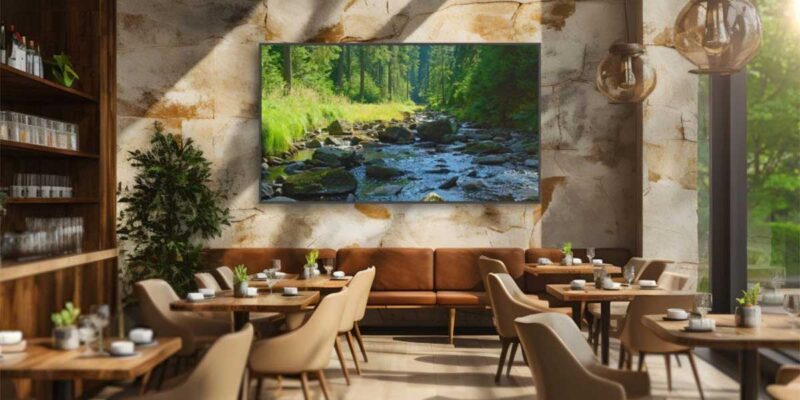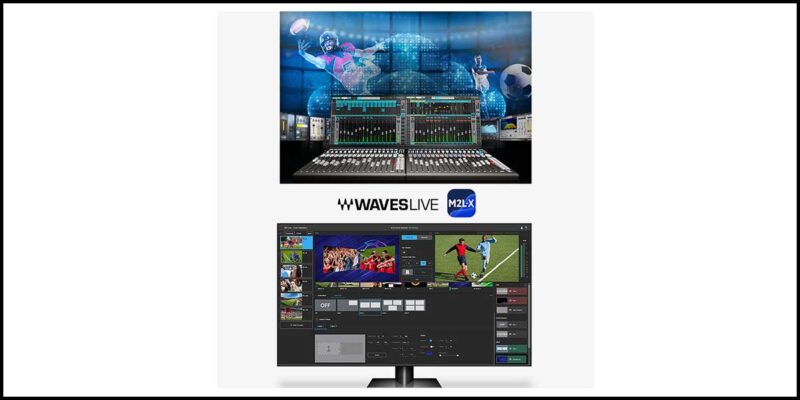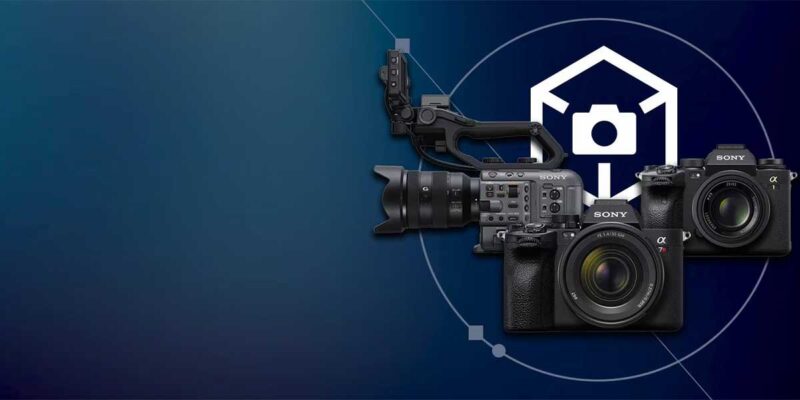Is CEDIA Irrelevant?
 The annual CEDIA Expo is the industry’s premier HomeAV trade show, where every major manufacturer of home automation, whole-home audio and video distribution systems, HDMI gadgets, HDTVs, projectors and set-top boxes convene annually to show their new stuff. And, the 2013 edition opens this week in Denver, Colorado. We have a handful of reporters there too that will be shooting hundreds of videos as well as blogging and Tweeting about all the new gear via a dedicated CEDIA 2013 website.
The annual CEDIA Expo is the industry’s premier HomeAV trade show, where every major manufacturer of home automation, whole-home audio and video distribution systems, HDMI gadgets, HDTVs, projectors and set-top boxes convene annually to show their new stuff. And, the 2013 edition opens this week in Denver, Colorado. We have a handful of reporters there too that will be shooting hundreds of videos as well as blogging and Tweeting about all the new gear via a dedicated CEDIA 2013 website.
For over 20 years, this has been THE SHOW that everyone who makes, sells, designs or just loves home electronics goes to. I remember attending my first CEDIA Expo, a small table-top show (I am pretty sure it was the second expo ever) in San Francisco — then the next year, it was double the size of the San Francisco event and had moved to Dallas. It was basically an adult-toy fair — every gadget you could imagine wanting in your home was there. And, still is.
But, as CEDIA closes in on its 25th show next year, it’s time to take an honest look, albeit a controversial one, at whether or not CEDIA’s Expo is even relevant any longer.
To begin, let it be clear that this column is not, in any way, second-guessing the need for CEDIA as an association. CEDIA is full of amazing people doing amazing things and, first and foremost, protecting the HomeAV integrator community from predatory practices, unfair competition and helping educate them on all new technology. Heck, the first time I ever heard of AV/IT convergence was via a session sponsored by CEDIA. The first 1080p projector I ever saw was at CEDIA Expo. The first 100-percent-filmless, digitally-produced movie clip I ever saw was at a CEDIA event and the first 3D video I ever saw was there too. The association that is CEDIA needs to continue and thrive.
But, is the show (known affectionately by the long-time attendees as “Expo”) still, well, worth the expense? Is there really innovation there that’s worth seeing — stuff you can’t see at your local Best Buy or elsewhere?
Well, let’s take a look at five factors that work against a future CEDIA Expo:
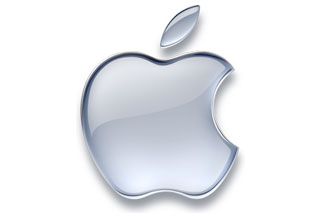 1. Apple: Apple has single-handedly been the worst thing for CEDIA. Prior to the iPod, the music server industry was thriving, with integrators installing $2,000, $4,000 and even $10,000 music servers that were the ultimate in whole-home music power. And, the iPod certainly doesn’t do what those music servers do, but it did put a giant “good-enough” stamp on the entire audio segment of the market. Fast forward a few years and the iPhone and iPad have helped usher in a plethora of companies that have virtually stripped the $1,500 touch panel business away from the HomeAV integration community. Heck, one giant control system manufacturer just told me yesterday it used to make 12 percent of its total profit from touch panels going exclusively to the home market — now that’s down to less than 1 percent. The HomeAV manufacturers have not tried to fight Apple, and have even joined in the iOS craze by making Apple interfaces for their systems and even iPad or iPhone GUIs and apps. But the truth is, these are accessories — not a core business — and, given a choice, the integrator would rather an Apple device be the accessory, not the main part of a system.
1. Apple: Apple has single-handedly been the worst thing for CEDIA. Prior to the iPod, the music server industry was thriving, with integrators installing $2,000, $4,000 and even $10,000 music servers that were the ultimate in whole-home music power. And, the iPod certainly doesn’t do what those music servers do, but it did put a giant “good-enough” stamp on the entire audio segment of the market. Fast forward a few years and the iPhone and iPad have helped usher in a plethora of companies that have virtually stripped the $1,500 touch panel business away from the HomeAV integration community. Heck, one giant control system manufacturer just told me yesterday it used to make 12 percent of its total profit from touch panels going exclusively to the home market — now that’s down to less than 1 percent. The HomeAV manufacturers have not tried to fight Apple, and have even joined in the iOS craze by making Apple interfaces for their systems and even iPad or iPhone GUIs and apps. But the truth is, these are accessories — not a core business — and, given a choice, the integrator would rather an Apple device be the accessory, not the main part of a system.
And, all this is without mentioning what AppleTV has done to the CEDIA integrator. While Apple spent three years (up until only a month or so ago) calling its AppleTV set-top box a “side project,” it also: quietly drove the invention of the Roku; is THE reason Sony added streaming video to the PlayStation; was the impetus for Google’s Chromecast; and was the reason that Samsung invented its SmartTV line (and then was copied by Sony, Sharp and others). By all accounts, it’s also only getting better. You can deny AppleTV has had an impact, but you’re living in a dream world — nearly 50 percent of the 15 million-plus AppleTVs ever sold were sold just in 2013. And, as I just mentioned, it’s also spawned a dozen or so copies of streaming video options that once were only available via CEDIA integrators in the $5,000 and $10,000-plus range. At $99, who wouldn’t buy an AppleTV or something like it?
Oh, did I forget to mention the future stuff coming from Apple? Think it won’t effect the custom installers? Dream on.
 2. Wireless Networks: Although the HomeAV integrator jumped on networking AV gear a full three years before the ProAV integrator did, it’s that very integration that allows clients to stream cheap video and audio via the Internet into their homes. And, all this does is make someone NOT really need source gear (e.g., Blu-ray players — I assume you’ve noticed the staggering decline in sales of these players in 2013, set-top boxes, etc.). It’s all available wirelessly via the Web. Sure, there are network issues that still need to be addressed, speed problems in some places and even quality of content questions — but, is there really someone out there that thinks that ANY source gear other than a video game console will exist by 2015? Nope — it’ll all be virtual connections to Netflix, Hulu, Steam (Don’t know what this is? Well, then no wonder you think that source gear will still be around!) via the wireless network.
2. Wireless Networks: Although the HomeAV integrator jumped on networking AV gear a full three years before the ProAV integrator did, it’s that very integration that allows clients to stream cheap video and audio via the Internet into their homes. And, all this does is make someone NOT really need source gear (e.g., Blu-ray players — I assume you’ve noticed the staggering decline in sales of these players in 2013, set-top boxes, etc.). It’s all available wirelessly via the Web. Sure, there are network issues that still need to be addressed, speed problems in some places and even quality of content questions — but, is there really someone out there that thinks that ANY source gear other than a video game console will exist by 2015? Nope — it’ll all be virtual connections to Netflix, Hulu, Steam (Don’t know what this is? Well, then no wonder you think that source gear will still be around!) via the wireless network.
 3. Simple Home Automation: This one’s a tough one, as I don’t think any of these so-called simple home automation companies (e.g., ube, Leviton, onQ, etc.) have really simplifed anything. The only real winner, so far, is Nest — the HVAC controller. However, collectively, they’ve stripped the home automation market of a giant pile of money. It’s a fact that home automation integration is way, way down in 2013 over 2007, 2008, 2009, 2010 and 2011. An insider at one of the big-three home control companies told me last week that the company did 50 percent of its business in Home AV and 50 percent in ProAV in the year 2010. In 2013, he said that HomeAV would be less than 15 percent. And, it’s not because the ProAV market is growing that much faster. So even though there is no such thing as a simple, DIY or easy-to-use version of a Crestron, AMX or Control4 control system, the market is still suffering.
3. Simple Home Automation: This one’s a tough one, as I don’t think any of these so-called simple home automation companies (e.g., ube, Leviton, onQ, etc.) have really simplifed anything. The only real winner, so far, is Nest — the HVAC controller. However, collectively, they’ve stripped the home automation market of a giant pile of money. It’s a fact that home automation integration is way, way down in 2013 over 2007, 2008, 2009, 2010 and 2011. An insider at one of the big-three home control companies told me last week that the company did 50 percent of its business in Home AV and 50 percent in ProAV in the year 2010. In 2013, he said that HomeAV would be less than 15 percent. And, it’s not because the ProAV market is growing that much faster. So even though there is no such thing as a simple, DIY or easy-to-use version of a Crestron, AMX or Control4 control system, the market is still suffering.
4. HDMI: The connector that we all love to hate, HDMI, is the homeowner’s dream. An executive at Best Buy told me this week that the box store used to sell twenty-times the amount of $100 HDMI cables that it does now — even though there are a lot more products with HDMI on them. People are buying cheap HDMI cables all over the place. In addition, the fact is that HDMI — like it, love it or hate it — is on everything, and it’s stripped the magic out of complicated AV racks and signal routing products in homes. And now the 4K thingie that we’re supposed to all get excited about is also using HDMI (although 4K is looking a little like 3D hype in the home — unless you’re talking giant screens or 3D 4K).
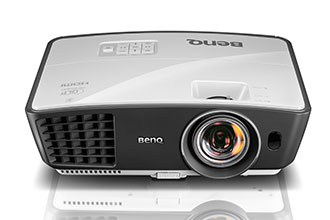 5. Last but not least, projectors are all really, really good: The flat-panel HDTV market is gone for the custom install market — heck, when we polled HomeAV integrators recently, they told us they buy most of their TVs from Best Buy or online as the stock and pricing commitments are too high for the true CI. And projectors used to be the big differentiator. Up until two years ago, I’d never have considered putting ANY projector in my home theater other than a Sony VPL series. But today I have a 720p BenQ projector (the W770ST) sitting next to my desk right now that actually looks amazing. And, for 10 years I’ve refused to even consider a DLP projector for my home. But I am told BenQ’s W1500 is even better (and it’s 1080p resolution). Honestly, the edge Sony had is GONE. The company’s had the best video processing and projection of high definition images for years, but not any more. It’s now available to everyone thanks to things like Texas Instruments’ DarkChip3, ISFccc Certification and better lenses. The projector isn’t a commodity yet, but pick one, any one and most of your customers will be perfectly happy!
5. Last but not least, projectors are all really, really good: The flat-panel HDTV market is gone for the custom install market — heck, when we polled HomeAV integrators recently, they told us they buy most of their TVs from Best Buy or online as the stock and pricing commitments are too high for the true CI. And projectors used to be the big differentiator. Up until two years ago, I’d never have considered putting ANY projector in my home theater other than a Sony VPL series. But today I have a 720p BenQ projector (the W770ST) sitting next to my desk right now that actually looks amazing. And, for 10 years I’ve refused to even consider a DLP projector for my home. But I am told BenQ’s W1500 is even better (and it’s 1080p resolution). Honestly, the edge Sony had is GONE. The company’s had the best video processing and projection of high definition images for years, but not any more. It’s now available to everyone thanks to things like Texas Instruments’ DarkChip3, ISFccc Certification and better lenses. The projector isn’t a commodity yet, but pick one, any one and most of your customers will be perfectly happy!
So, what is CEDIA Expo giving you that you can’t get anywhere else? Will it survive the Apple, Samsung, Netflix, DirecTV, Dish Hopper, Hulu and a-la-carte TV future? Well, all that remains to be seen, but if you are in HomeAV now and want to stand out, make a statement and be a leader, there’s no question that the place to be is in Denver this week at CEDIA Expo 2013. CEDIA is still delivering on its promise — the organization’s not only added new emerging opportunities to the CI (for example: home security, energy management and in-home healthcare AV – a future explosive growth market), but they’ve got everyone who’s anyone exhibiting in 2013 — go ahead, type in a name and you’ll find them at CEDIA 2013. The number of exhibiting companies is actually up this year, the number of attendees, pre-show, is up from 2012, and the amount of education at CEDIA is impressive, with seven tracks of courses ranging from business to technology classes. Plus, CEDIA is still the ONLY group supporting (rather fiercely, I might add) the custom installer, despite all the market changes, and you’re benefiting from that, EVEN IF you’re not a CEDIA member and you’re not attending Expo. So you kinda owe it to them to support them back.
So, if you’re in HomeAV, you should have gone to the 2013 Expo. Big mistake if you’re missing it.
If you didn’t make it, we’ll give you the next best thing to being there with our dedicated CEDIA MicroSite where we will post videos from nearly every manufacturer exhibiting — so you can see all the new products yourself. We will also be writing blogs and news stories on all the new AV gear introduced at CEDIA (in fact, we already have posted over 30 new product stories and the show hasn’t even opened).
But you should go ahead and set aside that travel budget to go to Denver next year.



